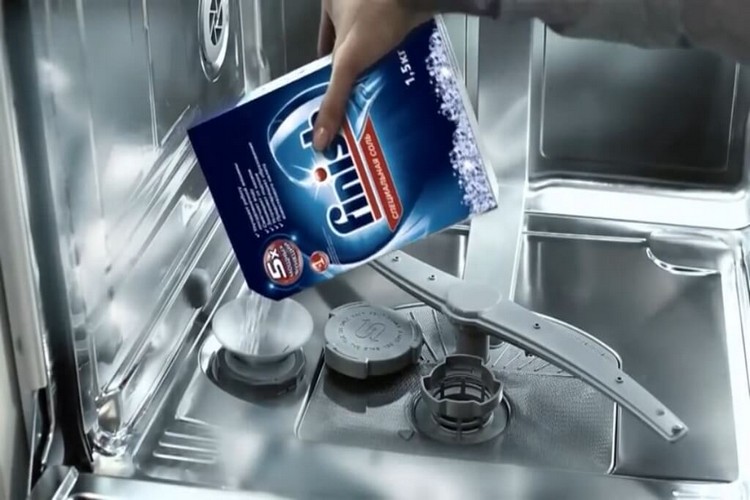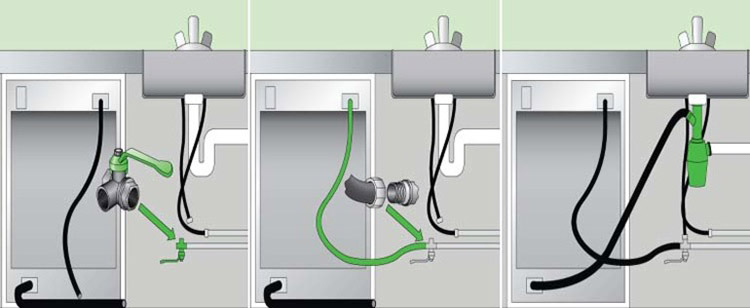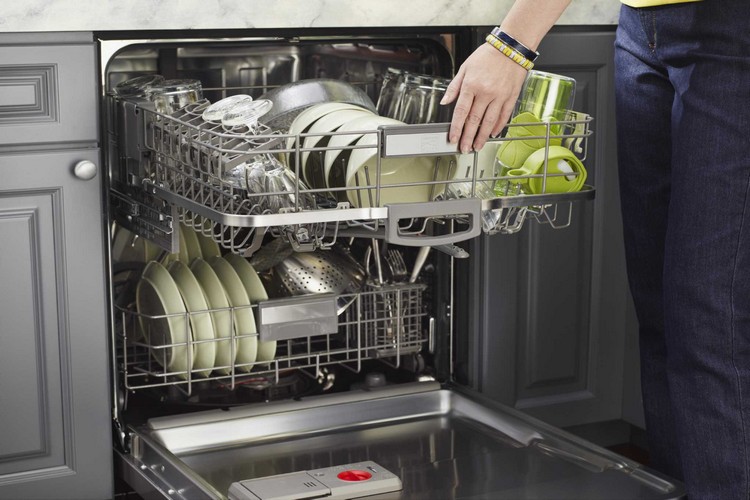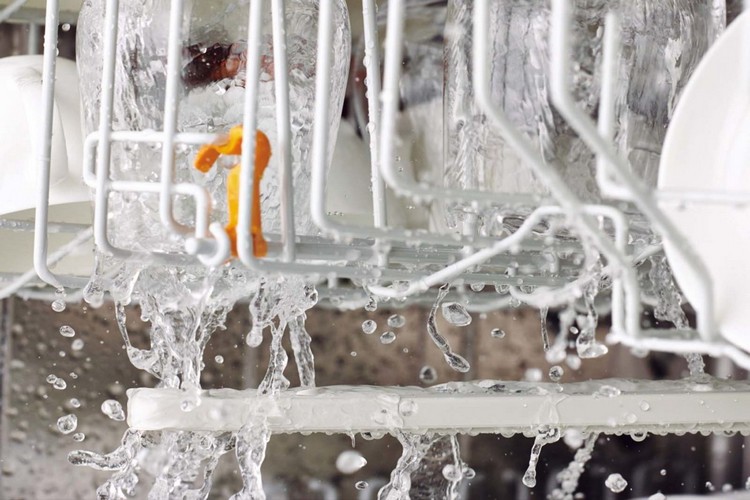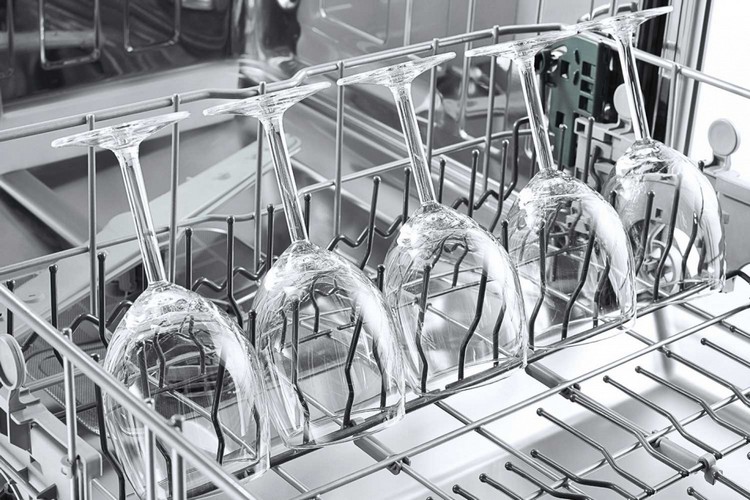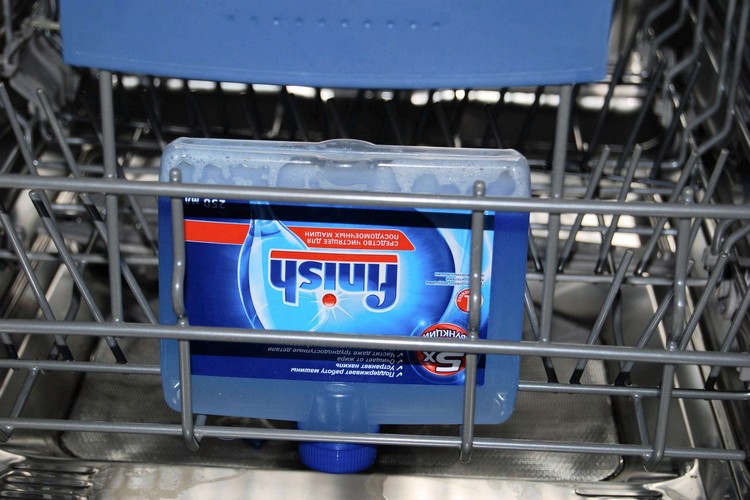Dishwasher Instructions: Dishwasher Instructions - Dishwasher Loading, Switching On and Using
 When a dishwasher is bought for the first time, there are lots of questions on how to use it correctly.
When a dishwasher is bought for the first time, there are lots of questions on how to use it correctly.
But experience shows that even those who have been using this appliance for a long time, sometimes there are nuances that require more detailed study.
This article will tell you how to prepare your dishwasher, how to take care of it, how to load dishes in it and the various nuances of maintaining this household appliance.
Content
- How often you need to wash the dishes
- How to prepare your dishwasher for work
- How to prepare the dishes for washing in the dishwasher
- How to place the dishes into the automatic dishwasher correctly
- How to choose a washing mode
- What you cannot wash in the washing machine
- Care and maintenance of the Automatic Processor
- Useful video
How often you need to wash our dishes
You can wash your dishes in the dishwasher once every two days. The machine uses about 11 liters of water, which is considerably less than washing by hand. Subsequently, eliminating the need to wash by hand has a positive effect on the skin and nails: the skin stops peeling and the nails stop flaking.
Getting the machine ready for use
Before using the dishwasher, it is necessary to prepare it - to choose the products for it and connect to the communications. But, about everything in order.
Salt
Preparing the dishwasher for work, it is important to pay attention to such an issue as, chemicals.
The fact is that the number of fakes on the market of chemicals for dishwashers is enormous, and purchasing power is quite low. Many people can not afford to buy the same pills or capsules for 2000-2500 rubles per package, not to mention powders, salt, gels of expensive manufacturers. Therefore, customers very often choose more budget-friendly solutions and buy chemicals of well-known brands somewhere at a discount.
When it comes to salt, people often complain that there is plaque, sand, and marks on dishes, and salt is to blame.
Real edible salt is an extra salt, with a purity of 99%, it contains 1% of insoluble impurities, in fact, the usual stone and sand. Therefore, the usual salt should not be poured into the dishwasher, it leads to the deterioration of the ion exchanger in 5-12 months.
If you buy real, proper salt, this salt has two characteristics: first, its purity of 99.98%, it is much cleaner than the purest food salt in the world, and there are fewer impurities, and secondly, this salt dissolves quickly.
Even if it has some tiny crystals, which can scratch something, it dissolves literally immediately.
If you buy fake salt, no matter what brand, be prepared for it to kill your ion exchanger. If low-quality salt enters your salt tank, the water washing it out of there will not have time to dissolve it. As a result, in a very short period of time the ion exchanger will be shattered and killed.
Therefore, as long as the dishwasher is normal, you should never buy salt from various strange stores, buy only from chain stores and never buy cheap, strange salt.
Rinse
A lot of people think that you can buy any rinse aid and it does not depend on it, but here everything is much more complicated.
The fact is that the rinse aid is the last to react, to come into contact with the dishes. This means that your quality of life and nutrition depends on its safety. Because if the rinse aid will not completely leave with the water and will leave a film on the dishes, then this film will get into your stomach when you eat later.
So it's better to get wet dishes without rinse aid at all than to buy a cheap rinse aid and be happy that you saved money. The main feature of cheap rinse aid is that it doesn't dry your dishes. There are water droplets on the dishes after drying, it means that either the dosage is wrong, or there is something wrong with the rinse aid, it is better to get rid of it.
Connecting your dishwasher to warm water
The fact is that in the market in Europe, especially in southern Europe, virtually every dishwasher has the ability to connect to warm water. It should not be confused with hot water, hot water is not anywhere in the world, except in the former Soviet Union, in the rest of the world, cold water is supplied to houses and it is heated by the owner of the apartment.
In the south of Europe, where 250-300 sunny days a year, for centuries on the roofs of houses put the same black tanks, as we have at dachas, and now put solar panels, or something else that allows you to heat this water for free.
And in this case, instead of connecting the dishwasher to electricity and spending a lot of electricity to heat water, people actually heat water in the home for free. The only condition is that the water temperature should not exceed 55-60 degrees, because the machine is not designed for higher temperatures.
We have more people using water heaters than solar plants. If you have an electric water heater, then you will not achieve special savings, you can take the risk only if you can clearly control the temperature around 55-60 degrees.
The recommendation of the masters is that if you use an external water heater instead of the dishwasher's heating element, the repair will be much cheaper.
If you connect the dishwasher to warm water of 55-60 degrees, the load on the heating element becomes much less. This applies to all dishwashers, regardless of manufacturer, the only exception being the premium segment machines. When they are connected to warm water, drying does not occur at all.
If you don't care about drying, if your machine doesn't have a heat exchanger, then connect it to warm water with complete peace of mind, this will really prolong its life.
Preparing your dishes for washing in the washer-dryer
According to the instructions, before you load your dishes into the dishwasher, you need to remove any leftover food from them. Many people don't like this, but there's really no problem with it, especially since even if you wash dishes by hand, you still need to remove the leftovers before you put them in the sink.
If you load the dishes directly with the leftovers, the food will fly around inside throughout the wash cycle and even stay on the dishes.
How to put the dishes in the washer/dryer correctly
There are several ways to use the dishwasher.
If you store dirty dishes in the sink and load them into the machine the evening before you wash them, you get a more rational arrangement and there's no smell of dirty dishes left in the dishwasher.
And if you put the dishes in the dishwasher right after you eat, you'll be happy with a clean kitchen and sink. But you'll have to stack more compactly and close the machine tightly before turning on the sink, otherwise every time you open it to put a new batch of dishes throughout the day you'll get an unpleasant smell.
Spoons and forks can be washed on the top tier or they can be washed in the basket. It's much faster to wash in the basket. To save time, you can flip down the dividers on the basket and put the spoons and forks straight into the bundle. This is much faster than inserting each spoon into the divider one at a time, and they wash the same way. In the basket, you can also wash any other little things - lids, or some small parts of dishes.
On the lower tier you can put large plates, pots, pans. If you have any ladles or pots, you can put them on the side of the plates and they will wash well there.
The most important rule is to put everything with holes upside down because water splashes from the bottom but flows along the walls on top of the dishes, and if you put something upside down then when you open the dishwasher you'll see a bowl full of water.
After everything is already arranged, if the dishwasher is packed tightly, you need to check whether the dishes do not interfere with the sprinkler.
How to choose a wash mode
Any dishwasher, both built-in and desktop, has several washing modes, on average they are five, here are some of them:
Soaking .
This mode is useful to use when there are not yet so many dirty dishes, for example, after breakfast.
During the day, you can add dishes to the machine, this mode will simply rinse them from food debris so there is no unpleasant odor or dried-on food.
Quick wash
You can run this mode if you are waiting for guests and you urgently need clean dishes, or you do not yet have so many dishes of medium contamination.
It lasts no more than half an hour. There will be no pre-rinse, it will only wash the dishes at 45 degrees, an intermediate rinse and a final rinse. The dishes after all this will be wet, because drying is not included here either, hence the time savings.
Intense washing
This mode also includes a pre-rinse, a 70 degree rinse, an intermediate rinse, a final rinse, drying.
This mode is used mainly for heavily soiled dishes - pots, pans, rough dishes, cutlery. This mode should be used very carefully if you wash plastic items, because not all products will withstand it, they can sit in size and change their shape.
Delicate wash
This mode is necessary for washing delicate dishes, such as glasses. Delicate washing is performed at a temperature of 30-40 degrees Celsius, and lasts 20-30 minutes.
Thanks to the gentle action on the dishes, they will not be damaged.
Standard dishwashing
This mode is characterized by a temperature of 60 degrees, the duration of 40-60 minutes, is used for ordinary dishes with average dirt.
Half-wash.
In this mode, only one tray is involved, in order to save water, money and electricity. Due to this it takes more time.
Extra rinse
This mode is used to prevent the dishes from smelling of chemicals after washing.
What must not be washed in the automatic dishwasher.
Buying a Dishwasher, especially of such well-known brands as Bosch, Indesit, Hansa, Midea, Beko, Hotpoint Ariston, Electrolux, it seems that finally you can relax. Load the machine, turn it on and you can do nothing.
In part this is true, but there are things that wash in it is not recommended.
Glass glasses
Many people find that their glass glasses get scratches and then a bright matte finish.
When you wash dishes under the faucet, nothing terrible happens, but in the washing machine is a little different - the glass is in it every day for 1.5-2 hours. Powerful water jet, high temperature, aggressive lye, all this leads to the fact that the water, which falls on the surface of dishes is the most aggressive, begins to withdraw calcium and magnesium from the glass.
As a result, there are damages on the glasses, and it is impossible to repair them. This is not the washing machine's fault, it is the water's. It is very important to set the water hardness correctly. If, for example, your water hardness is 4 and you set it to 5, then more salt will be added, the water will soften more, which means that the water will be over softened and it will lack calcium.
To prevent this from happening, all manufacturers have special programs for washing glass.
Certain types of metal utensils
We are talking about strainers, graters, vegetable slicers and garlic cutters.
In addition, under the influence of detergents there may be a black deposit, from which you can get rid of with sandpaper, but the appearance will still suffer, not to mention the fact that this deposit will be not only on the dishes, but also on the inner walls of the dishwasher.
Wooden items: boards, ladles, spoons, forks
Nothing will happen to them from one wash. But a long stay in the water soaked wood fibers and increases the size of the product, then the object dries up and there are cracks, irregularities. And this is at best, at worst the product will simply fall apart.
Cast-iron cookware: pots, pans, woks, cauldrons
The material itself is durable, but the use of detergents in the dishwasher reduces durability and provokes the appearance of rust. Also, after washing, the protective non-stick layer disappears.
Any other dishes with non-stick coating should not be washed in the dishwasher either.
Porcelain and crystal
Like glass, this material is fragile, but glass goblets can be washed in the dishwasher, because with the right approach, they will look like new after washing.
But glasses made of porcelain should never be washed, they can crack and lose their shade and luster.
Plastic
Here everything depends on the strength of the dishes, but if the walls are thin - then the washing it may not survive. In any case, it is necessary to look at the special signs on the bottom of the dishes, which allow or prohibit washing in the oven.
Care and Maintenance
There are a few basic parts in the PMM that require maintenance: the first of these are the rockers. If you don't always use good quality chemicals, or you wash at low temperatures, then food residue that has not dissolved due to the use of inappropriate chemicals and inappropriate temperatures can get into the circulation system, and the circulation system ends up in the nozzles.
So if there are dishes not rinsing somewhere in the PM, it's not the dishes, it's those nozzles. The holes they use are very small, this is done in order to increase the pressure. Therefore, the upper and lower rocker arms need to be flushed periodically.
It is necessary to clean the holes with sticks, forks, or blow with compressed air cylinders. After flushing, they must be placed correctly, namely, with the bottom down.
We can not look inside the rocker, as well as inside the dishwasher itself, but to notice that the machine washes somehow wrong is possible, so the next point is the care of the circulation system.
If at the end of the wash, there is foam inside, if there are bad odors, if the water does not drain well, it is all due to grease contamination inside the circulation system, not necessarily only in the rocker arms. Grease occurs when low temperatures are used during washing and when fake chemicals are used.
There are different cleaners like Finish and Somat, they are sold in every store. You need to turn the jar over, fix it on the protruding pins, and when the temperature inside the dishwasher reaches 65-75 degrees, in which case the wax or wax that is used in the lid, it becomes softer and releases the cleaner.
If you do not want to use expensive bottles and cans, there are dry chemicals.
Most manufacturers have different powders, which are sold in conventional stores. You need to heat the machine to about 65 degrees, wait about 10 minutes and pour the entire packet of salt inside.
Such a procedure should be done about once every 3-4 months.
If you feel that the water pressure is reduced, the dishes are washed poorly, in this case you need to use chemicals, pour the powder for cleaning. But remember the main secret: it is necessary to first warm up the washing machine and only then pour the powder there. If it is poured there first, or some cleaning gel is poured while the machine is not warmed up, it will all be a fifth leg for the dog, wasted chemicals and time.
Useful video
How to use the dishwasher will be explained in the video-synthesis:



